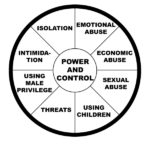
Studies are showing that this year’s election is triggering a higher level of anxiety in more people than ever before. Many people are worried that our Democracy is at stake and they fear that our health, safety, and future are at risk. The barrage of negative campaign ads and conspiracy theories, in addition to increased isolation due to COVID-19 and continued racial violence and injustice, have all heighten the fears of many Americans. Besides worry and excessive fear, many people are also experiencing trouble sleeping, increased or decreased appetite, sadness, irritability, muscle tension, avoidance, trouble concentrating, and feeling on edge. These are all symptoms related to anxiety, depression, and acute stress. So how do you manage these symptoms? What do you do when faced with uncertainty? What do you do when you feel out of control? The best thing to do is to identify the things within your control and practice them to the best of your ability. Here are just a few:
• Take Deep Mindful Breaths – Focusing on the breath and deeply inhaling and exhaling relaxes the body and mind. Relaxation plays an important role in helping to regulate our emotional responses. Start by taking a few slow deep breaths. Inhale deeply and hold for 2 counts then exhale fully. Inhale and allow your belly to extend like a balloon filling with air then exhale as if you are letting all the air out of the balloon. You can even say to yourself the healthy things you are inhaling (i.e. peace, joy, love…) and exhale things you are releasing (i.e. worry, fear, anger…). Incorporating gratitude with each breath is also a helpful tool.
• Exercise Your Right to Vote – Voting matters and the ability to vote is within your control. Many people fought, died, and bled for this right and it is one of the ways to let your voice be heard. Voting is a powerful tool for expressing your desires and asserting your feelings. Advocating for yourself and others can lead to a sense of empowerment that contributes to overall health and wellbeing.
• Take a Break from the News – There is nothing wrong with staying informed. However, news reports often capitalize on what will win the most attention to increase ratings. These reports are sometimes speculative and fixate on threats that can arouse our nervous system. In order to reduce anxiety, it’s important to separate facts from fiction and take control of what information you take in. It’s also important not to feast on a steady diet of news but to take breaks and maybe watch a comedy or just turn the TV and other devices off altogether.
• Manage Your Expectations – Our expectations play a big role in our emotional responses. It’s important to have realistic expectations and those that are not tied to a specific and uncontrollable outcome. For example, if you are expecting a clear winner on Election Day and that doesn’t happen, the tension of uncertainty is prolonged. However, if you don’t expect it you can engage in other calming activities and stay grounded in the present, taking each day as it comes.
• Practice Good Self-Care – Some people falsely think of self-care as a luxury when in actuality it is ESSENTIAL. If you do not take care of yourself, you burnout, your immune system is compromised and you are unable to function in a healthy way. There are simple ways to practice good self-care like taking breaks, getting adequate sleep, eating healthy foods, exercising, going for walks, talking with friends, or listening to nature sounds or your favorite music. It’s also important to speak kindly to yourself and show yourself compassion. Speak comforting words to yourself as you might to someone you care about. How you nourish yourself is self-care and it helps to have a plan that you implement regularly.
If you are having difficulty practicing healthy coping strategies and your symptoms persist and cause distress, please contact a health care professional to help get you on the path to peace and wellbeing.











